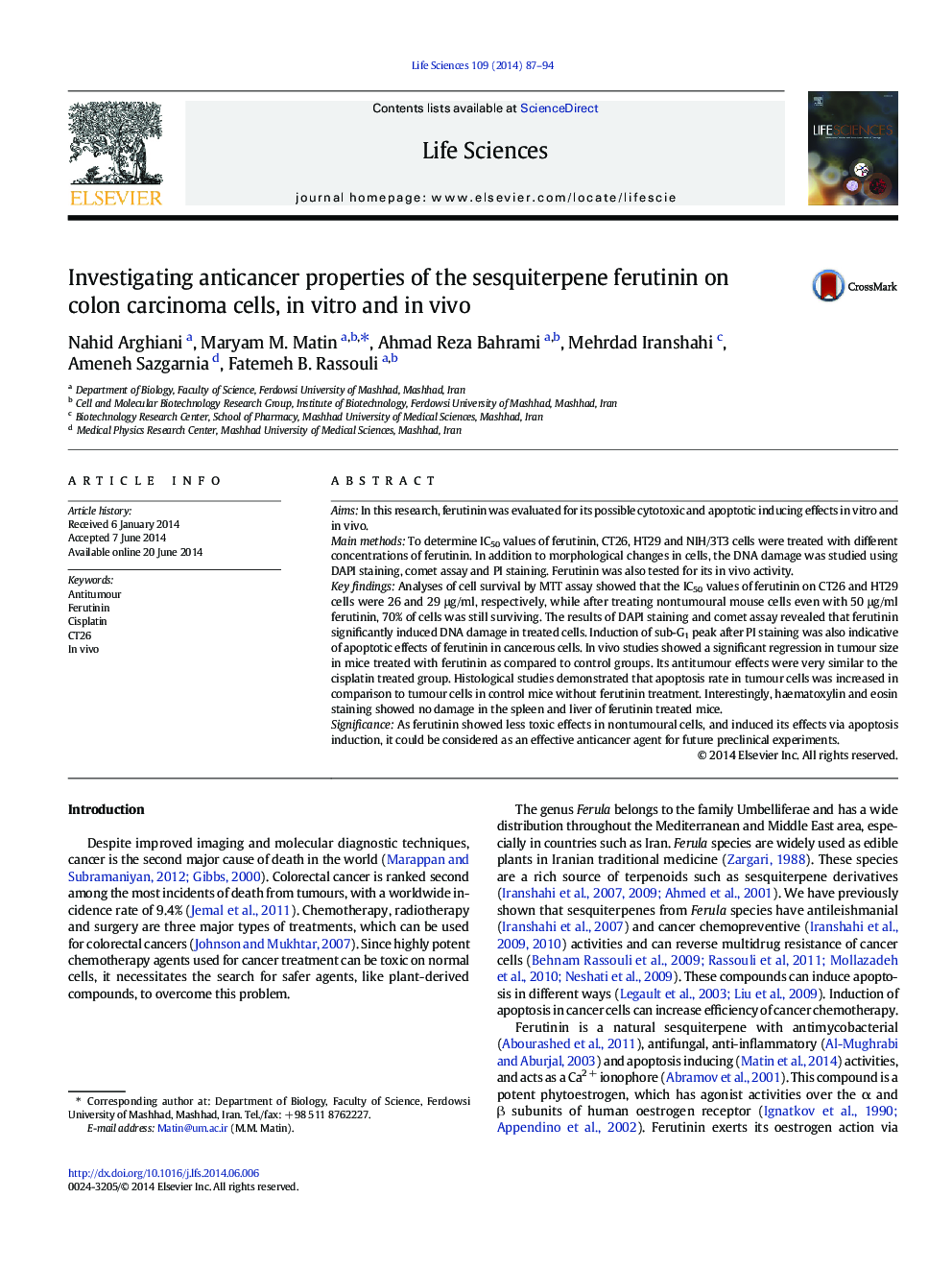| Article ID | Journal | Published Year | Pages | File Type |
|---|---|---|---|---|
| 5842020 | Life Sciences | 2014 | 8 Pages |
AimsIn this research, ferutinin was evaluated for its possible cytotoxic and apoptotic inducing effects in vitro and in vivo.Main methodsTo determine IC50 values of ferutinin, CT26, HT29 and NIH/3T3 cells were treated with different concentrations of ferutinin. In addition to morphological changes in cells, the DNA damage was studied using DAPI staining, comet assay and PI staining. Ferutinin was also tested for its in vivo activity.Key findingsAnalyses of cell survival by MTT assay showed that the IC50 values of ferutinin on CT26 and HT29 cells were 26 and 29 μg/ml, respectively, while after treating nontumoural mouse cells even with 50 μg/ml ferutinin, 70% of cells was still surviving. The results of DAPI staining and comet assay revealed that ferutinin significantly induced DNA damage in treated cells. Induction of sub-G1 peak after PI staining was also indicative of apoptotic effects of ferutinin in cancerous cells. In vivo studies showed a significant regression in tumour size in mice treated with ferutinin as compared to control groups. Its antitumour effects were very similar to the cisplatin treated group. Histological studies demonstrated that apoptosis rate in tumour cells was increased in comparison to tumour cells in control mice without ferutinin treatment. Interestingly, haematoxylin and eosin staining showed no damage in the spleen and liver of ferutinin treated mice.SignificanceAs ferutinin showed less toxic effects in nontumoural cells, and induced its effects via apoptosis induction, it could be considered as an effective anticancer agent for future preclinical experiments.
Graphical abstractDownload high-res image (267KB)Download full-size image
